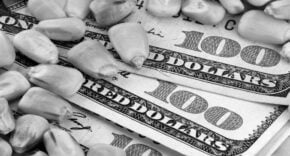(Kitco News) – It’s official, 2022 was a record year for central bank gold demand, according to updated research from the World Gold Council.
And while that is more of an accounting headline, the data just reiterates significant bullish factors supporting the gold market. While 2023 is not expected to be a record year for central bank gold demand, they are forecasted to continue to be net buyers.
We can already see consistent demand from the People’s Bank of China. Data from China’s central bank shows that it bought 15 tonnes of gold last month. This is the third consecutive month China has increased its gold reserves. According to some analysts, this trend is not expected to end anytime soon.
China’s last shopping spree was from 2002 to 2019, accumulating 1,148 tonnes of the precious metal during that 17-year period.
Along with central bank demand, analysts are also keeping an eye on investment demand for the precious metal. Although gold prices rallied more than $300 from their November two-year lows and saw the best start to the year in a decade, investors remained roughly on the sidelines.
In what was a busy week for the World Gold Council, analysts said that for the ninth straight month, global gold-backed exchange-traded funds saw net outflows in January. The monthly report said that 26 tonnes of gold, valued at $1.6 billion, flowed out of the global market.
However, the WGC said that it also sees signs that lackluster investment demand could be turning a corner. The outflows were led by European-listed funds, with North American funds seeing inflows of nine tonnes, valued at $572 million.
One major factor driving renewed interest in gold is the rise in economic uncertainty. A growing chorus of analysts is now looking for gold to hit record highs this year as markets continue to downplay recession and inflation risks.
In separate interviews with Kitco News, Thorsten Polleit, chief economist at Degussa and Michele Schneider, director of trading education and research at MarketGauge, said there is little the Federal Reserve can do to bring down inflation to its 2% target.
Schneider said that gold remains an attractive safe-haven asset.
“Whether it’s inflation, stagflation, or even recession, ultimately, chaos is bubbling beneath the surface everywhere,” she said. “I don’t see any reason why we can’t see $2,000 gold this year.”
Meanwhile, Polleit said there is no way the Federal Reserve can lower inflation without causing a recession. He added that when the recession does hit, the central bank will quickly reverse course and that is when gold will shine.
At the same time, the risks to the economy are more than just rising consumer prices; there is another significant economic threat brewing in the U.S.: a potential government default.
At the start of the week, Kristalina Georgieva, managing director of the International Monetary Fund, said that the U.S. government defaulting on its debt obligations would be very damaging.
The U.S. government officially reached its borrowing limit last month and with some creative accounting, the Treasury Department is expected to be able to pay its bills until June.
While there is still time to resolve this issue, some major banks have noted that the risks of a default are growing.
She noted that gold ended up climbing in August and breached $1,900 an ounce by September of that year. She added that analysts have said that a similar pattern could play out this year.
“Anytime government spending comes up, it makes gold more attractive because it’s a neutral asset. It’s not subject to government policy in terms of going up or down in value like the U.S. dollar could,” Gainesville Coins precious metals expert Everett Millman told Kitco News. “The 2011 example is an interesting parallel because when there are fears that the financial system is on shaky ground, the debt ceiling can turn from a non-issue into something that makes people more fearful about the government’s stability and the financial system’s stability.”
Source: https://www.kitco.com/news/2023-02-10/China-s-buying-gold-are-you.html








